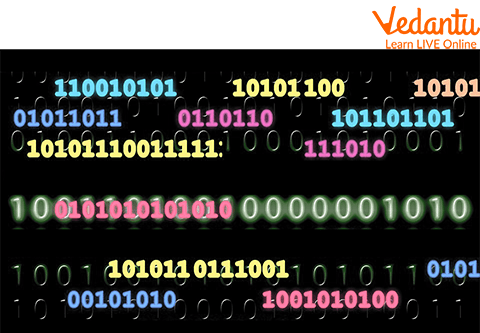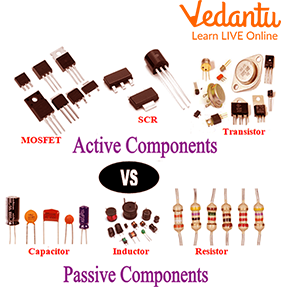




Overview of Digital Electronics
In today’s era, digital electronics are an essential part. Digital electronics work with a digital format that further works on data and codes. It is safe to say that digital electronics is the basis of modern computers and digital communications and includes phones, computers, etc. Digital electronics consists of many complex digital logic circuits that help build a single circuit, popularly known as a microprocessor. These circuits further perform thousands of operations at the same time.
In this article, we will learn about the basics of digital electronics and what can be considered electronic digital notes. Let’s see what basic storage elements are used in a digital system.
Definition of Digital Electronics
Digital electronics is a branch that studies digital signals and the setup of different devices that use them. This concept only translates and communicates information in binary format, i.e. one and zero. It is noise-immune, flexible, and best suited for digital devices. This concept is entirely different from analogue, which has an extra dimension, is exposed to noise, is less flexible, and is mostly used for audio and video. There are the fundamentals of digital electronics.

Binary Format
Advantages of Digital Electronics Over the Analog Electronics
It is much easier and more convenient to store information in the digital system than in the analogue system.
As the digital system has a noise-immunity feature, the data can be stored and later retrieved without destruction or degradation.
Even though multiple circuits are required to manage the signals in a digital system, every digit is handled by the corresponding hardware components.
Digital signals are more secure because encryption and compression of signals are easier in digital systems than in analogue systems.
Components of Digital Electronics
Digital electronics consist of numerous components that are used for performing specific functions. These components are divided into two categories, namely:
Active Components
Passive Components

Active and Passive Components
Active Components
An electrical circuit element that may provide the circuit with power or increase the circuit's power is referred to as an active element or active component.
Energy sources (voltage or current sources), alternators or generators, and semiconductor devices like transistors, photodiodes, etc., are typical examples of active circuit elements.
The circuit component, known as the active elements, is entirely in charge of the circuit's electric current flow.
Passive Components
A passive circuit component, or simply passive component, is a circuit part that can only receive electrical energy and dissipate it as heat or store it in either a magnetic field or an electric field.
As a result, in an electric circuit, a passive component cannot produce electric power or power amplification. The resistor, inductor, capacitor, and transformer, among other components, are typical examples of passive circuit components.
Advantages of Digital Electronics
The advantages of digital electronics are as under:
It is easier to design digital electronics circuits. Technology today has made it comparatively easy to design digital circuits. The person designing the component does not need to know the basic operation of the required features.
Digital electronic circuits are quite reliable. When a digital circuit is designed, it will always produce the same output at any given point in time.
It is highly flexible. One can easily change the working of the digital circuit without even changing the program.
It is pocket-friendly. With the help of existing technology, it is possible to produce complex digital circuits at lower costs.
Disadvantages of Digital Electronics
The disadvantages of digital electronics are as under:
In comparison to the analogue system, the digital system uses more energy. Calculations and signal processing use up this energy, which causes heat to be generated.
These systems cost a lot of money.
The electronic systems are brittle. In other words, the final results will radically change if one digital data is misinterpreted.
As analogue components are included in the design of the digital system, dealing with analogue concerns in digital systems may be challenging.
Summary
From the digital electronics notes, we have learnt that the main component in digital electronics is digital circuits composed of large assemblies of logic gates. A digital system is a system that processes discrete values. We need digital electronics for the generation of accurate representations of signals digitally. In today’s time, our household is full of digital electronics like laptops, televisions, remote controls, and kitchen appliances like dishwashers and washing machines. Download fundamentals of digital electronics pdf to clear any other doubts.
FAQs on What is Digital Electronics?
1. What is Digital Electronics in simple terms?
Digital electronics is a branch of electronics that deals with digital signals, which are signals that exist only in two discrete states: ON or OFF. These states are typically represented by the binary numbers 1 (ON/High) and 0 (OFF/Low). All devices that process information in this binary format, like computers and smartphones, are based on the principles of digital electronics.
2. What are the basic logic gates that form the building blocks of digital electronics?
The fundamental building blocks of all digital systems are the basic logic gates. They perform a logical operation on one or more binary inputs to produce a single binary output. The primary logic gates are:
- AND Gate: The output is 1 only if all inputs are 1.
- OR Gate: The output is 1 if at least one of the inputs is 1.
- NOT Gate: The output is the inverse of the single input (0 becomes 1, and 1 becomes 0).
Other important gates include NAND, NOR, XOR, and XNOR, which are combinations of these basic gates.
3. What is the main difference between analog and digital electronics?
The primary difference lies in the type of signal they process. Analog electronics deals with continuous signals that can have an infinite number of values over a given range, like a sound wave. In contrast, digital electronics deals with discrete signals that can only have two distinct values, typically represented as 0 and 1. This binary nature makes digital signals less prone to noise and easier to store and process accurately.
4. What are some common real-world examples of digital electronics?
Digital electronics is the foundation of modern technology. Common examples include:
- Personal Computers and Laptops
- Smartphones and Tablets
- Digital Watches and Calculators
- Traffic light controllers
- Digital cameras and Televisions
- Microprocessors and Memory (RAM/ROM)
5. Why are binary numbers (0s and 1s) so important in digital electronics?
Binary numbers are crucial because they perfectly represent the two-state nature of digital circuits. An electronic switch, like a transistor, can be either fully ON or fully OFF. This ON state is assigned the value '1' and the OFF state '0'. This simplicity makes circuit design reliable and allows complex information to be processed by combining millions of these simple ON/OFF switches. It creates a robust system that is highly immune to the noise and distortion that affect analog signals.
6. How is Boolean algebra applied in digital circuits?
Boolean algebra is the mathematical foundation for designing and analysing logic circuits. It uses variables that can only be TRUE (1) or FALSE (0) and operators like AND, OR, and NOT. Engineers use Boolean algebra to create a mathematical expression for a desired circuit function. This expression can then be simplified, which directly translates to a simpler, more efficient, and cost-effective logic gate circuit.
7. What are the key advantages of using digital systems over analog systems?
Digital systems offer several significant advantages over their analog counterparts, which is why they are so widely used. Key benefits include:
- High Accuracy and Precision: Digital data can be stored and transmitted without degradation.
- Immunity to Noise: Small fluctuations in voltage (noise) do not affect the binary state.
- Easy Data Storage: Information can be easily stored in memory devices.
- Programmability and Flexibility: Digital circuits can be easily programmed and reconfigured for different tasks.
- Miniaturisation: Integrated circuits (ICs) allow for millions of logic gates to be placed on a single chip.























